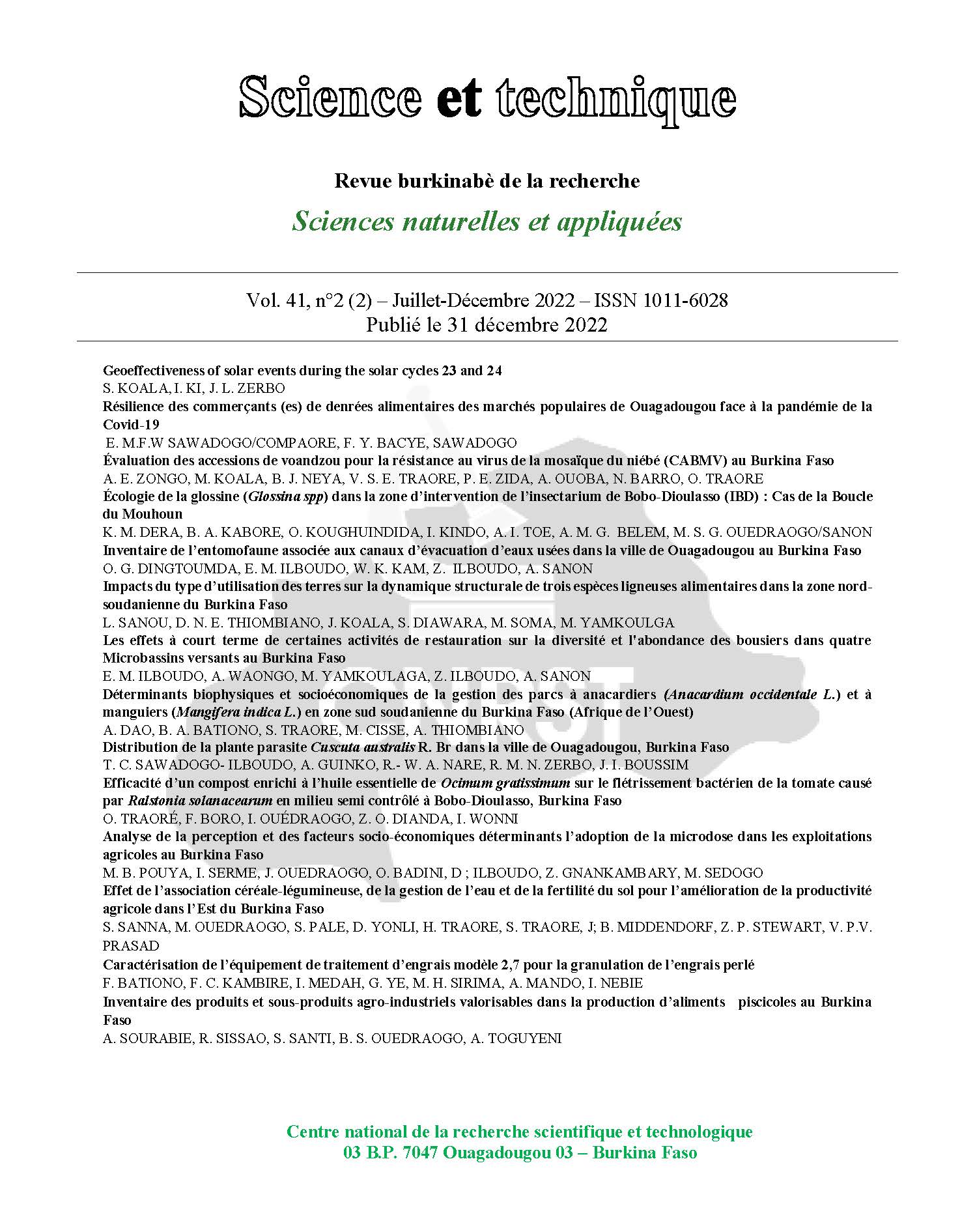Biophysical and socioeconomic determinants of cashew (Anacardium occidentale L.) and mango (Mangifera indica L.) park management in the southern Sudanian zone of Burkina Faso (West Africa)
Keywords:
biophysical criteria,, plantation, forestry practices, agroforestry park, arboriculture, Burkina FasoAbstract
Cashew and mango orchards are an essential component of agricultural production systems in western
Burkina Faso. However, the high demand for cultivable land due to population growth has led to an
expansion of orchards, resulting in a land shortage. To remedy this situation, producers have switched
from pure fruit farming to agroforestry. Semi-structured surveys were conducted in a village area of the
Kénédougou province in the southern Sudan zone of Burkina Faso to understand the management of
cashew and mango orchards. Data on biophysical criteria for the establishment of orchards, planting
methods, motivations for the creation of parks, and forestry and cultural practices were collected using a
questionnaire administered to 243 park owners. Descriptive statistics and regressions were conducted to
determine the factors determining park establishment and management. Soil and topography were found
to be the main biophysical criteria for orchard establishment. The lack of cultivable land (85.1%), the
maintenance of the plantation (4%) and the diversification of the sources of income (5.4%), motivated the
passage from the "pure orchard" system to the "agroforestry park" system. However, climatic and
socioeconomic constraints hinder the efficient management of the system. Therefore, practices that
promote diversification and optimization of agricultural production while reducing the risk of land
conflicts should be promoted in the resilience strategies of rural communities to climate change.

